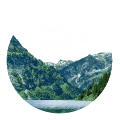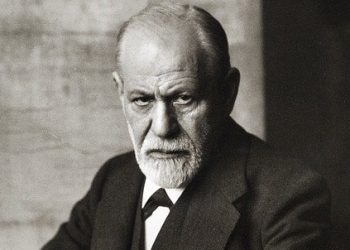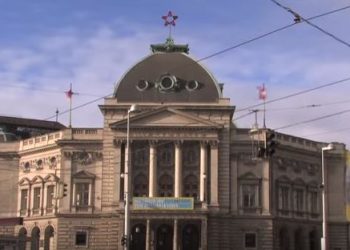This article gathers all the most up-to-date information on the museums of the National Library, including current exhibitions and the most essential information for visiting them.
- Literature Museum
- Globe Museum
- Papyrus Museum
- Esperanto Museum
1. Literature Museum (Literaturmuseum der Österreichischen Nationalbibliothek)
In this museum, you can learn about the world of Austrian literature from the 18th century to the present day and discover things you never knew about this world. The permanent exhibition in the museum presents a wide variety of Austrian literature from different periods and also showcases the world of the writers themselves.
The exhibits teach how literature shapes our world and how it has influenced history. Furthermore, a visit to the museum will teach you how a novel is written, what writers lived on, where they wrote their works, and how Austria was reflected in their creations.
In the historical part of the exhibition, you can learn what makes Austrian literature unique and how these elements are expressed in various works. There is no doubt that Austrian works were greatly influenced by the diversity of the empire, the different languages, and the different cultures that were subject to the rule of the House of Habsburg. Austrian literature touches on all parts of the empire: Vienna, Budapest, Prague, the Carinthia region, and more.
The exhibition in the museum is modern and combines audio, video, and photographic displays to present the world of Austrian literature in the best possible way.
Interactive Tour
There are many ways to wander through the Literature Museum. You can use the museum’s tablet computer to enjoy an interactive tour at your own pace. Using the computer, you can choose from several tours the one that best suits your interests and tour the museum’s exhibition accompanied by videos, audio clips, and extended information.
The tablet tour is included in the entrance fee and is also offered in English.
Additional Essential Information for Visiting the Literature Museum
Opening Hours:
- Tuesdays and Wednesdays: 10:00 AM to 6:00 PM.
- Thursdays: 10:00 AM to 9:00 PM.
- Fridays to Sundays: 10:00 AM to 6:00 PM.
- Mondays: Closed.
Costs for self-guided tour:
- Adult: €9
- Child (up to age 19): Free entry (additional cost for a guided tour).
- Discounted tickets for students and seniors can be purchased at the ticket office upon presentation of an ID.
- Holders of the Vienna City Card get free entry.
- Tickets can be purchased online
Address
Johannesgasse 6, 1010 Vienna, Grillparzerhaus
How to get to the Literature Museum?
You can reach the Literature Museum from two underground stations. The closest station is Stephansplatz, served by the red line U1 or the orange line U3. The walking distance from there is about 5 minutes.
Another option is to arrive at Karlsplatz station via the purple line U2, the green line U4, or the red line U1. The walking distance from there is 7 minutes.
Map:
2. Globe Museum (Globenmuseum der Österreichischen Nationalbibliothek)
This museum is the only one of its kind in the world. The display features about 250 different globes from ancient times to the present. In addition, there are collections of instruments used in measurement and astronomy.
The museum is located in the magnificent Palais Mollard. The museum rooms are filled with different types of globes, in all shapes and sizes. There are huge globes with a diameter of a meter or more, and there are globes that depict the moon and the star system.
The exhibition begins with general information about globes: how they are built, their advantages and disadvantages compared to regular maps, and how the world of globes has developed from ancient times to the present. Additionally, you can learn about the history of the Globe Museum itself.
The museum rooms themselves are impressive, as befits a magnificent palace. In the Golden Room, decorated with stunning murals, you can admire the unique collection of instruments related to the world of globes. From there, you will proceed to the adjacent room, which contains globes depicting the Earth and the star system from the mid-16th century. The globes showing the moon and the star system are the only ones of their kind in the world.
In the last room of the museum, the Collectors’ Room, there is an ancient globe from 1536, created by Gemma Frisius. This is the oldest globe in Austria.
It is interesting to see that on one of the ancient globes in the museum, there are words written in Hebrew, including the names of countries.
Essential Information for Visiting the Globe Museum
Opening Hours:
- Tuesdays and Wednesdays: 10:00 AM to 6:00 PM.
- Thursdays: 10:00 AM to 9:00 PM.
- Fridays to Sundays: 10:00 AM to 6:00 PM.
- Mondays: Closed.
Costs:
Please note: A single ticket combines entry to the Globe Museum and the Esperanto Museum.
- Adult: €6
- Child (up to age 19): Free entry
- Discounted tickets for students and seniors can be purchased at the ticket office upon presentation of an ID.
- Holders of the Vienna City Card get free entry.
- Tickets can be purchased online
Address
Palais Mollard, Herrengasse 9, 1010 Vienna
How to get to the Globe Museum?
You can reach the Globe Museum with a short walk from the Herrengasse underground station on the orange line, U3. Alternatively, you can walk about 5 minutes from the main State Hall located at Josefsplatz.
Map:
3. Papyrus Museum (Papyrusmuseum der Österreichischen Nationalbibliothek)
The collection of papyri displayed in this museum is absolutely amazing. There are no fewer than 300 different exhibits of papyrus sheets with writing from the 2nd century BC to the flourishing Islamic period in the 13th century AD.
In the museum, you can see a variety of ancient and extraordinary texts that reflect the daily lives of people in ancient empires. The papyri that were found and are now displayed in the museum tell anecdotes from the lives of people who lived thousands of years ago. It is amazing to read these ancient texts and the fascinating explanations about them.
Furthermore, the papyrus sheets present a glimpse of ancient Egyptian literature, classical texts in Greek and Latin, and also fairy tales from the Islamic period. Some of the texts also include passages from religious books such as the Bible or the Quran.
Besides describing the lives of people in ancient empires, one can identify through the ancient writings the development of languages and the differences between them and the languages we know today.
There is no doubt that the Papyrus Museum is fascinating and certainly provides a glimpse into interesting stories from ancient times. Although it is a small museum, history lovers will find extensive and extraordinary knowledge in it.
Essential Information for Visiting the Papyrus Museum
Opening Hours:
- Tuesdays and Wednesdays: 10:00 AM to 6:00 PM.
- Thursdays: 10:00 AM to 9:00 PM.
- Fridays to Sundays: 10:00 AM to 6:00 PM.
- Mondays: Closed.
Costs:
- Adult: €6
- Child (up to age 19): Free entry
- Discounted tickets for students and seniors can be purchased at the ticket office upon presentation of an ID.
- Holders of the Vienna City Card get free entry.
- Tickets can be purchased online
Address
Neue Burg, Heldenplatz, Untergeschoß
How to get there?
To enter the museum, you must first enter the New Castle Wing (Neue Burg) of the Hofburg Palace. You can reach it from Heldenplatz (Heroes’ Square). Walk straight from the square towards the front of the palace and enter through the door at the top of the stairs. Inside the building, you will need to go down to floor -1, where the museum is located.
Map:
4. Esperanto Museum (Esperantomuseum der Österreichischen Nationalbibliothek)
In this museum, you can learn the entire history of the Esperanto language. The modern museum offers an interactive experience where you can get a glimpse of one of the most innovative languages in the world, which almost led a linguistic revolution on a global scale.
In the museum, you can be exposed to the wonderful world of language invention and, in particular, the stages of development of the Esperanto language over the last hundred years. The exhibition will take you on a journey through time, from the publication of the first book in Esperanto in 1887 and its rapid spread in the period before World War I, to its aggressive suppression during the Nazi era and the language’s use today.
Although the museum is very small, its exhibition is enjoyable and enriching. At the entrance to the museum, you can watch a short film to get an overview of the history, syntax, and current use of the language. You can play various games that will teach you a few words in Esperanto and the rules of the language.
For language lovers, this is definitely a great museum for a light and enlightening visit.
Essential Information for Visiting the Esperanto Museum
Opening Hours:
- Tuesdays and Wednesdays: 10:00 AM to 6:00 PM.
- Thursdays: 10:00 AM to 9:00 PM.
- Fridays to Sundays: 10:00 AM to 6:00 PM.
- Mondays: Closed.
Costs:
Please note: A single ticket combines entry to the Globe Museum and the Esperanto Museum.
- Adult: €6
- Child (up to age 19): Free entry
- Discounted tickets for students and seniors can be purchased at the ticket office upon presentation of an ID.
- Holders of the Vienna City Card get free entry.
- Tickets can be purchased online
Address
Palais Mollard, Herrengasse 9, 1010 Vienna
How to get there?
You can reach the Esperanto Museum with a short walk from the Herrengasse underground station on the orange line, U3. Alternatively, you can walk about 5 minutes from the main State Hall located at Josefsplatz. The museum is in the same building as the Globe Museum.
Map:
Interested in visiting the National Library itself? Read more information about the magnificent State Hall!


















